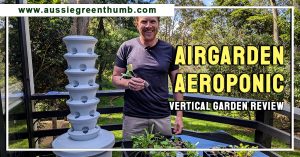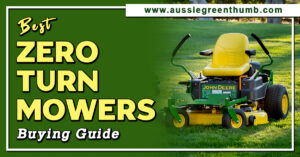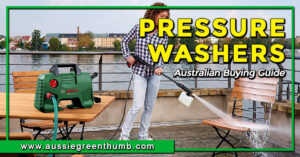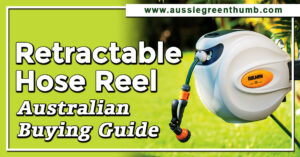Compactors come in different forms so, naturally, there’s going to be a big difference between the compactor you buy if you’re a contractor, and one you buy if you’re a domestic user. To stop you from getting caught up in a wave of price rises, we’ve put together a simple guide to help you choose the right compactor for you.
If you’re simply laying a couple of ground gravel pathways, or you need to prepare foundations, we’ve had a look at some simple manual compactors, but for any professionals out there looking for the best and most effective compactors for regular use, we’ve picked out some of our favourites for you to think about too.
More...
Top Pick

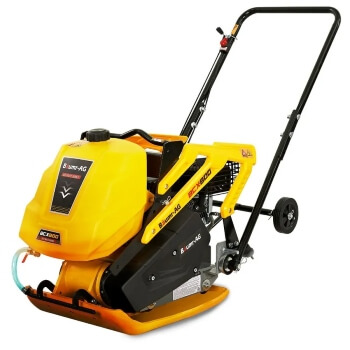
Best Compactors for 2024
Product | Our Rating | Price | |
|---|---|---|---|
1. Baumr-AG BCX800 7HP Plate Compactor | 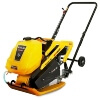 |  | |
2. Baumr-AG BRM-600 7HP Tamper Rammer Compactor | 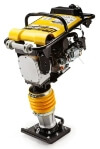 | ||
3. Draper Tools Expert Tarmac Tamper |
Compactors Australian Buyers' Guide
What are Compactors?
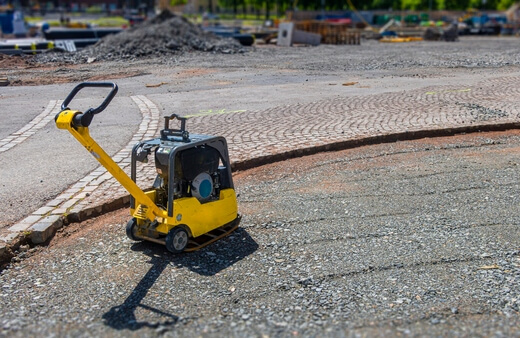
Compactors are used to do exactly what they claim; compact the earth. Compactors are useful for binding gravel paths and turning loose gravel, grit, or sand into a usable surface. They are also useful for preparing layers of hardcore in readiness for other finishing materials like brick laying and sandstone tiling.
What to Look for When Buying Compactors
Choosing the right compactor means finding a brand you trust, and methods you’re comfortable with. For most, you can achieve good results with manual tools, but for others, you’ll need some decent hydraulic tools, especially for bigger jobs.
Manual compactors Vs Petrol Compactors
Manual compactors, also sometimes called tampers, are just heavy plates on a long pole. It sounds simple because it is. All you do is aim for an even tamping across your entire site.
Depending on the size of the job it can take minutes or hours, and it’s back-breaking work, but it works well for compacting small channels of soil and sand and is a useful DIY approach to laying bound gravel paths if you’re prepared to put the time in.
For most professionals, petrol-powered compactors are the only choice. They offer better time efficiency, less manual work, and a more even end result. The only downfall is their price, often costing as much as twenty times that of manual tools.
Weight / Impact Force
Weight isn’t everything when it comes to compactors, but it can help. Some incredibly heavy compactors might weigh over 100kg, but they don’t offer the same impact force, vibration frequency, or plate width as lighter models.
Ideally, for professional compaction, you’d be looking for tools with at least 70 kg of pressure, and as wide a plate as possible. Narrow plates are great for small jobs, and compacting foundation channels, but for even compaction, wider plates give better results.
Vibrations
Don’t get too caught up in the vibration. Most compactors offer some anti-vibration controls, with comfortable and ergonomic handles to reduce strain, but there is no such thing as a vibration-free compactor.
Even manual compactors send shocks back up the handles to users, so invest in a good back support before using any type of compactor.
Different Types of Compactors
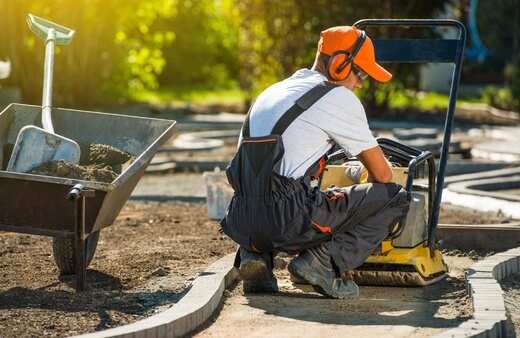
While there are dozens of tools that can be used for soil and gravel compaction (including rollers), there are only three real contenders for most practical compacting applications; Manual Tampers, Plate Compactors, and Jack Plate Tampers.
Each has their own use case, but as a rule, plate compactors are the most efficient over large areas, jack plates are handy for tight squeezes, and tampers are good for small DIY jobs.
Compactors Safety Guide
There are some very basic safety precautions to follow when using any type of compactor. They might be flat to the ground, but that doesn’t mean the ground doesn’t have other ideas.


Get Your Free Guide:
Master Growing Australian Natives eBook
A Must Have Complete Guide for Every Australian Garden
Get Your Free Guide:
Master Growing Australian Natives eBook
A Must Have Complete Guide for Every Australian Garden
- Use back support straps or braces to protect yourself from prolonged use
- Always work behind the machine
- Wear steel-capped boots for protection
- Wear goggles in case of flying debris
- Check the gas lines are intact, and that the brakes are working before using any mechanical compactor.
- Don’t work too fast. Compactors have maximum speeds for a reason!
Best Compactors in Australia
1. Baumr-AG BCX800 7HP Plate Compactor

Baumr-AG BCX800
The heavier, and more general Baumr-AG compactor is perfect for a wide range of uses, but is ideally suited to gravel on topsoil compaction. Its neat design is easy to clean, and straightforward to maintain, with a huge 111 kg of impact force over a well-proportioned 20” steel plate.
Pros
Cons
2. Baumr-AG BRM-600 7HP Tamper Rammer Compactor

Baumr-AG BRM-600
If you need even, net compaction, particularly for laying foundation rows, then you needn’t over spend. This Baumr-AG tamper is perfect for smaller projects and fairly priced too.
For larger jobs, or laying wide paths, you might find it hard to get an even finish with the smaller wacker plate, but for the majority of DIY uses around the garden, or for more focused commercial work, this jack plate compactor is ideal.
Pros
Cons
3. Draper Tools Expert Tarmac Tamper

Draper Tools 64379
Drapers tarmac tamper isn’t technically a compactor, but if you’re working through the garden, laying paths by hand, it’s a useful low-budget alternative to purpose-made tools and works well enough for a level finish.
Obviously, we don’t recommend the Draper tamper for pros, but if you’re doing simple DIY jobs and don’t want to over spend on single-use tools, consider something like this if you’re happy to put in some extra effort.
Pros
Cons
Our Compactor Top Picks for 2024
Top Rated Compactor


Baumr-AG BCX800
Of all the compactors we’ve used, this simple Baumr-AG model is probably the best value compactor that’s suitable for both professionals and amateur users. If you’re laying gravel or compacting dirt, it’s ideal for the job, and its built-in safety features make it stress-free too.
The biggest bonus though is that for a really decent price, you’re getting a compactor that’s more effective at even, neat, and seamless turns and joins than 99% of compactors for twice the price.
Compactor Frequently Asked Questions
Why are compactors used?
Compactors aren’t just a luxury tool, they have a serious purpose. Loose soil, gravel or stone can cause serious problems in road works, pathways, or even when laying foundations for structures like sheds, patios, and greenhouses.
Compactors are used to secure up the ground before any surface work is done.
How does a compactor work?
Compactors work by applying both force and vibrations to the ground, to force loose materials downward, and shake them so that the smaller particles fall to the base and the larger materials to the surface.
This creates a more even surface with less chance of collapsing or sinking.
What can I use instead of a compactor?
For small jobs, you can use a tamping rod, or tamper, which is essentially just a long rod with a heavy metal plate on the base. This will work on small areas, but takes a long time over large spaces, and is not particularly good at creating even compaction.
What are the most common types of compaction equipment?
Tamping rods, vibrating compactors and tamping jack plates (also called wacker plates) are the three main types of compactor tools used in both trade and domestic settings.
Is it better to do wet or dry dirt with a compactor?
The best time to compact soil is when it is dry-ish, rather than completely arid. Wet dirt won’t compact properly and when the moisture leaves it can loosen up below the surface, creating problems down the line.
Aim to use your compactor when the soil is mostly dry, but not arid.
Can you compact gravel by hand?
You can compact gravel by hand, particularly for light traffic areas like domestic garden paths, but the finish with a manual tamper will not be as good as if you use a mechanical compactor.
Should I wet gravel before compacting?
Unlike soil and dirt, the best time to compact gravel is when it's slightly wet. The dust that settles is often better adhered around larger particles when wet, and you won’t just create several layers of gravel at different sizes.
What size compactor do I need?
For every 1000 LB of pressure exerted by a compactor, you can lay 1 inch of loose gravel or soil for compaction. If you are compacting a 5-inch layer of gravel or hardcore, you’ll need a 5000 LB machine, and so on.
Can you over-compact soil?
You can over-compact soil, so don’t keep going. Once the soil is densely compressed and has a loose surface, but can no longer be dug out with a finger beneath the first cm, stop.
Over-compacted soil will simply break apart as you continue working it, creating loose sublayers.
Can you compact gravel too much?
Gravel, like soil, can be over-compacted. If you compact gravel too much the larger pieces will break down further, creating a more even, dusty texture, which won’t hold together well enough. Compacted gravel works because of the mesh of small and large particles.
What size gravel compacts the best?
While gravel needs a mix of sizes and loose dust to properly mesh together, it’s best to use a ¾-inch graded gravel to avoid having large stumbling blocks, which will rise to the surface as you compact it more and more, creating pits and divots in your paths, and potential weak points six you pour any other substrate over the top to set.
For more landscaping tools, check out our list below:
Get the Best Compactor for Your Needs
When all is said and done, petrol compactors are just better tools. They work more efficiently and leave you with level ground that’s easier to work with. But, as we’ve said before, they’re not cheap, and for most DIY jobs, manual tools can suffice, so save yourself a small fortune and opt for a good quality tamper if you’re just working in your own back yard.
For the pros, follow the guide above to choose the best gas compactor for you. If you’re laying narrow foundations or preparing pipe work, go for something narrow like a jack plate tamper. For laying paths and hardcore, flatbed compactors are always the best choice.
Published on February 5, 2023 by Gary Clarke
Last Updated on September 27, 2024

